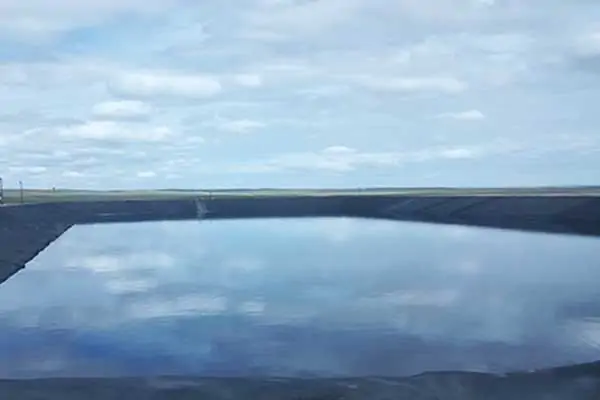


Managing oil and gas waste is challenging, even when practicing due diligence. The job requires impeccable skill and attention and sometimes outside support, which Colorado operators recently learned when they found high oil content in leachate coming out of their sump. They turned to SCS, knowing through their longstanding relationship with the engineers and that their liquids management team could deal with oil-laden wastewater.
Ensuring sustainable outcomes begins with collecting and analyzing comprehensive data that become the building blocks for a feasibility study. The study helps with immediate challenges and builds a more holistic approach to tackle increasingly expensive operation challenges at landfills.
“First, we talk about the site’s leachate history, including quality and quantity. What is the source of the waste generating the leachate, and where is it deposited? How are liquids used in current operations? The current practice used the liquids on the landfill surface for dust control, leaving an unsightly oily sheen.
Once we talk about how the site currently manages these liquids, we discuss options for future handling for improvement,” says Neil Nowak, SCS Engineers project director. “You’ve got to have a holistic understanding of day-to-day operations with the data to solve the problem cost-effectively.”
Neil’s preliminary research led to one recommendation to meet all the criteria – separate oil and water from leachate as the liquid exits the pump. The separation process can reduce the oil-laden leachate volume by 70 percent.
The technology works by separating the leachate into oil and water portions using an oil/water separator, such as a gun barrel tank, which is low cost and effective. After piping the water to an evaporation pond, the collected oil is sent offsite for future handling, usually disposal.
“This method gives the operator a better option for dealing with the leachate over the current practice of spraying it on the landfill surface for dust control,” Nowak says.
Spraying usually provides an alternative for liquids while reducing disposal time and cost. However, he explains, oil-laden leachate is a different beast than typical MSW liquids and calls for a more creative solution to remain within regulatory compliance.
Oil and water separation eliminates the aesthetics issues at the site with its previous practice. The greater value is that this method gives operators full control of oil’s movement, which can otherwise be very hard to accomplish.
“Oily leachate can adhere to the wheels of equipment that move dirt over the landfill surface; consequently, it ends up in places operators do not want it to go. Oil and water separation technology is a reliable way to keep it out of surface drainage areas and ensure it does not infiltrate into groundwater outside of the lined space,” Nowak explains.
Operators avoid short- and long-term consequences springing from compliance issues, but beyond today, the technology that SCS sizes operates for 20-plus years and helps prepare them for the long haul.
This option enables waste pros who take on growing demand from the oil and gas industry to protect the environment and public health, even as volumes increase. Oily liquids are particularly challenging for wastewater plants. Separation technology provides greater assurance that the landfill will still have a home for their leachate as wastewater treatment plants raise the bar on what they will allow.
The remaining question…
What is the most cost-effective and safe way to eliminate the filtered oil?
The solution for the immediate need is straightforward and simple. Depending on geology, local regulatory policy, and cost factors, solidification or injection are the most common, safe practices now, but reuse options are under development. Reuse and prevention are part of a longer-term landfill strategy, so Neil draws on his colleagues’ expertise.
Nowak’s expertise comes from years of experience supporting the oil and gas industry. Backing him is national liquid management expert Nathan Hamm, who lends technical expertise and insight on best practices for reducing leachate.
Explains Hamm:
Commonly the best bang for your leachate management dollar is to reduce the volume of leachate or wastewater to treat in the first place. Operators can begin by diverting stormwater away from active portions of the landfill, then installing a better cover system. Depending on the landfill’s need and location, reducing the size of new cells and timing those new cells to come online during low precipitation seasons is practical. Leachate minimization practices such as these directly reduce the treatment system capital and ongoing operational costs.
The Colorado operator now has oil and gas waste management options and has a comprehensive, site-specific review of leachate management with a clear understanding of where there is room for improvement.
As far as their immediate priorities, says Nowak, “We have left them with enough thought-out information to make informed decisions, and for now, they are leaning toward the oil and water separation technology. Though they can keep operating without it, they are looking to get ahead of possible compliance issues by making changes voluntarily, which are usually less costly in the end and demonstrates social responsibility to the Colorado Department of Public Health and Environment and the EPA.
Liquids and Leachate Management